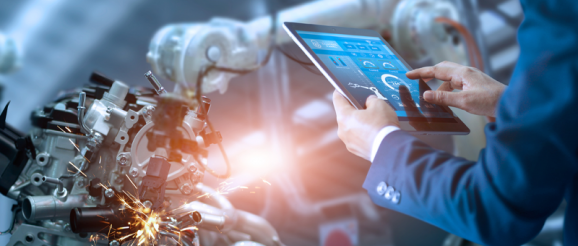4 Industries Driving Accessibility Innovation

By 2050, The Global Disability Innovation Hub estimates that “two billion people would benefit from assistive technology, yet 90% will not have access.” This sobering statistic puts into perspective the importance of continued innovation in accessibility and assistive technology. Accessibility innovations must balance inventiveness with practicality, in terms of cost, usability, manufacturing, and medical regulations—among other limitations.
With these constraints in mind, technology developed to assist individuals with disabilities (ideally with input from people with a range of functional abilities) can benefit everyone. For example, closed captioning—unveiled in 1971 at the National Conference on Television for the Hearing Impaired—is now ubiquitous. Whether watching YouTube on the train or enjoying a football game at a bar, captions are also helpful for sighted viewers.
The WIPO generally categorizes accessibility technology into vision, cognition, communication, environment, hearing, mobility, and self-care. Dozens of industries are contributing to innovations in these areas. Some industries and technologies are to be expected, like AI. Others are more surprising, such as gaming. Each of these four industries is pursuing accessibility innovations that can change how people with disabilities engage with the world around them.
3D Printing
3D printing is proving valuable in this arena because of the features that make it important in other applications. Using a 3D printer allows for highly personalized products quickly. For individuals with physical disabilities, this can mean modified utensils, switches and buttons, or even prosthetics. Ikea uses 3D printing to manufacture a line of furniture accessories, called ThisAbles, that make the company’s furniture more usable for people with unique needs. It’s also possible to quickly create 3D versions of 2D models (such as maps and graphics), which are hard for people with visual impairments to understand. Braille can easily be added to these 3D adaptations for additional context.
AI is already part of everyday life. Harnessing the potential of AI to fill the needs of individuals with disabilities would allow for an even greater impact. Already, smart homes, smart glasses, VR, and other AI-powered technologies are helping people interact with their environments. For example, the Amazon Echo Show’s camera can be used for “Show and Tell” which identifies common household objects for a user who is blind or visually impaired.
Artificial intelligence is more than just connected devices. Mentra, a “neurodivergent-friendly talent platform,” is using algorithms to make job seeking easier for those who struggle with the traditional application and interviewing process.
Paralympic athletes compete at the Olympic level with support from specialized wheelchairs, customized prosthetics, and other cutting-edge equipment. For more everyday applications, Nike developed the Go FlyEase sneaker. It’s the first shoe from the company that doesn’t require hands to put on or take off.
Sports aren’t just about the ability to participate on the field, court, or track. Technologies like Action Audio, which “turns spatial data from live sports into sound,” make sports-based entertainment more accessible.
